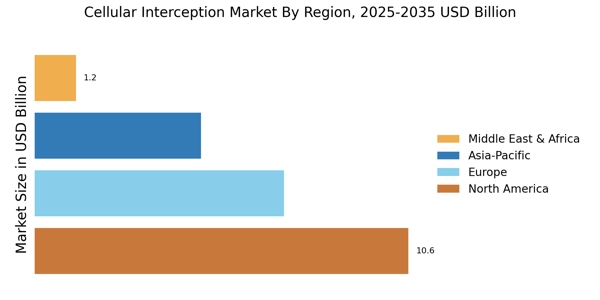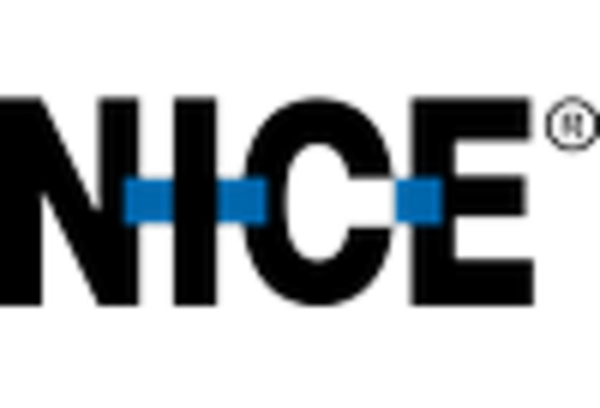Growing Mobile Device Usage
The proliferation of mobile devices is a key driver for the Cellular Interception Market. With billions of smartphones and tablets in use, the volume of mobile communications has skyrocketed. This trend presents both opportunities and challenges for security providers. As mobile communications become the norm, the need for interception technologies to monitor and secure these channels is increasingly critical. The market is projected to expand as organizations recognize the importance of protecting mobile communications from unauthorized access. This growth reflects a broader shift towards mobile-centric security solutions within the Cellular Interception Market.
Rising Cybersecurity Threats
The Cellular Interception Market is experiencing a surge in demand due to the increasing prevalence of cybersecurity threats. As organizations and governments face sophisticated cyber attacks, the need for robust interception technologies becomes paramount. In 2025, the market is projected to grow at a compound annual growth rate of approximately 10%, driven by the necessity for enhanced security measures. This growth is indicative of a broader trend where entities are prioritizing the protection of sensitive information. The Cellular Interception Market is thus positioned to play a crucial role in safeguarding data integrity and privacy, as stakeholders seek advanced solutions to counteract potential breaches.
Regulatory Compliance Requirements
Regulatory compliance is a significant factor influencing the Cellular Interception Market. Organizations are mandated to adhere to various data protection laws and regulations, which often necessitate the implementation of interception technologies. As regulations evolve, companies are compelled to invest in solutions that ensure compliance while safeguarding sensitive information. The market is expected to grow as businesses seek to avoid penalties associated with non-compliance. In 2025, the emphasis on regulatory adherence is likely to drive demand for interception technologies, highlighting the critical role of the Cellular Interception Market in facilitating compliance and protecting data privacy.
Integration of Artificial Intelligence
The integration of artificial intelligence (AI) into interception technologies is transforming the Cellular Interception Market. AI enhances the capabilities of interception systems by enabling real-time data analysis and pattern recognition. This technological advancement allows for more efficient monitoring and response to potential threats. As organizations increasingly adopt AI-driven solutions, the market is likely to witness substantial growth. In 2025, the incorporation of AI is anticipated to account for a significant portion of the market, as stakeholders seek to leverage advanced analytics for improved security outcomes. The Cellular Interception Market is thus evolving to meet the demands of a more data-driven landscape.
Law Enforcement and Intelligence Applications
The Cellular Interception Market is significantly influenced by the requirements of law enforcement and intelligence agencies. These organizations utilize interception technologies to monitor communications for national security and crime prevention purposes. In recent years, there has been a marked increase in government budgets allocated for surveillance technologies, reflecting a commitment to enhancing public safety. The market is expected to expand as agencies adopt more sophisticated tools to address evolving threats. This trend underscores the critical role of the Cellular Interception Market in supporting law enforcement efforts and ensuring effective intelligence gathering.


















Leave a Comment